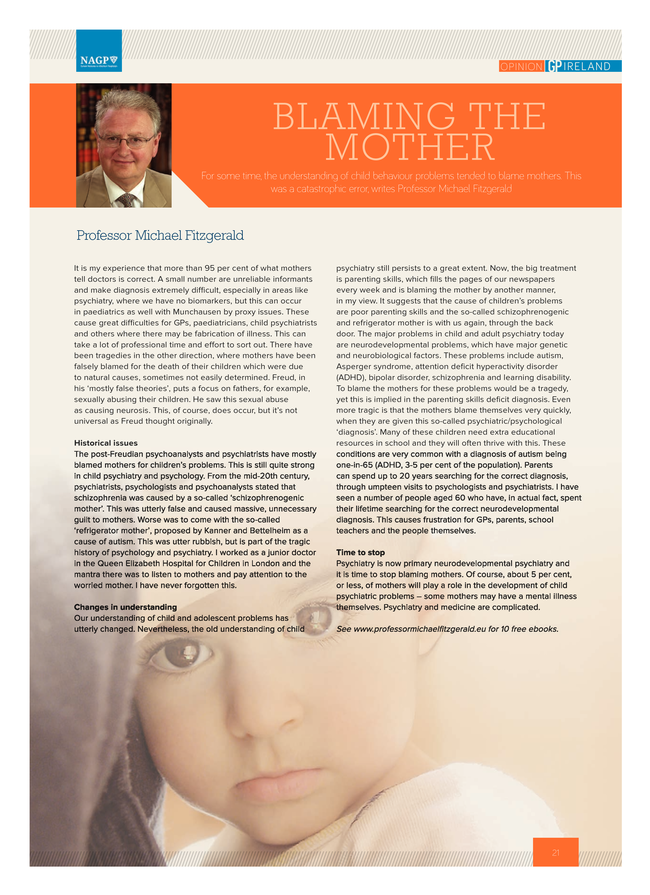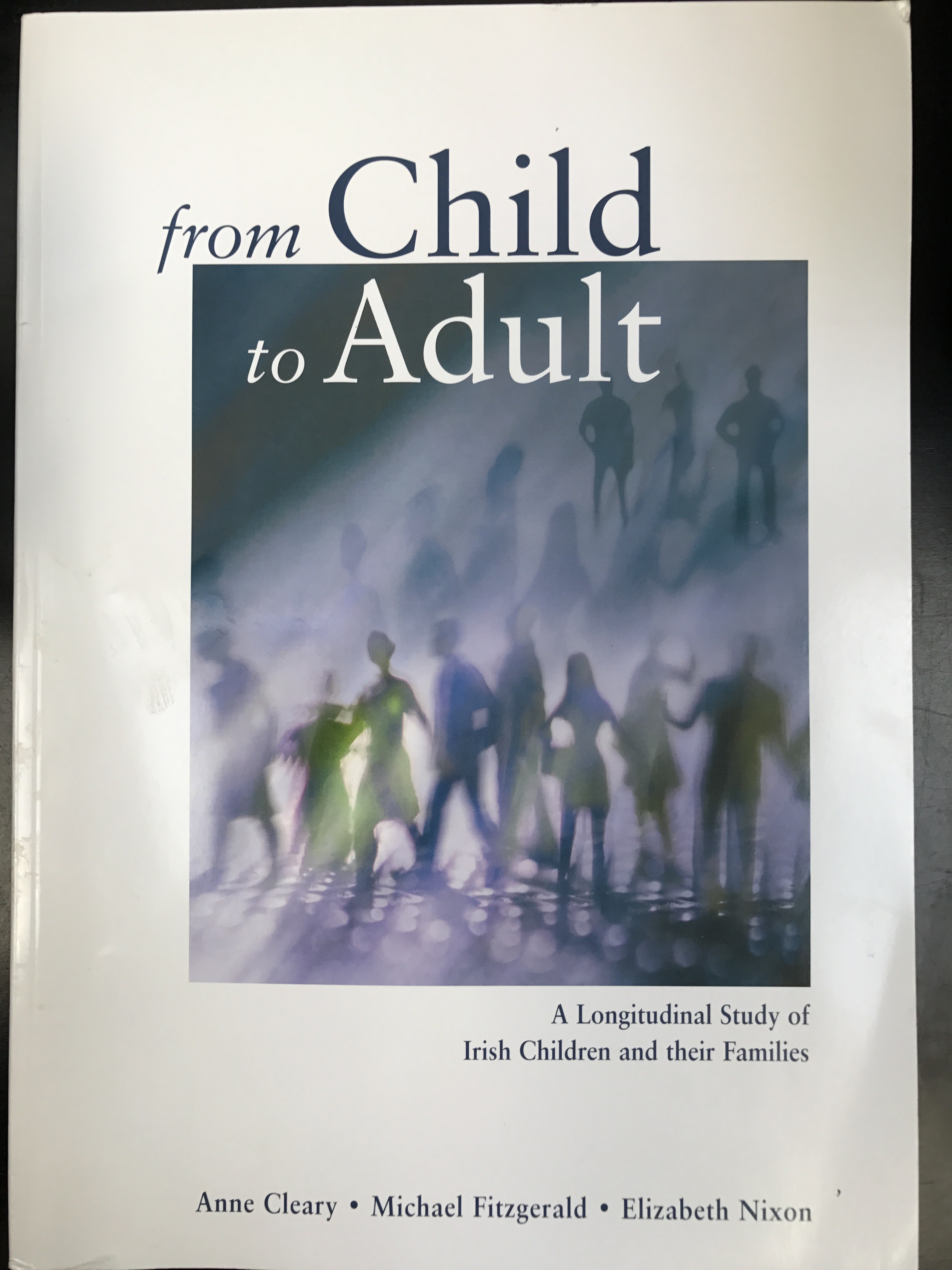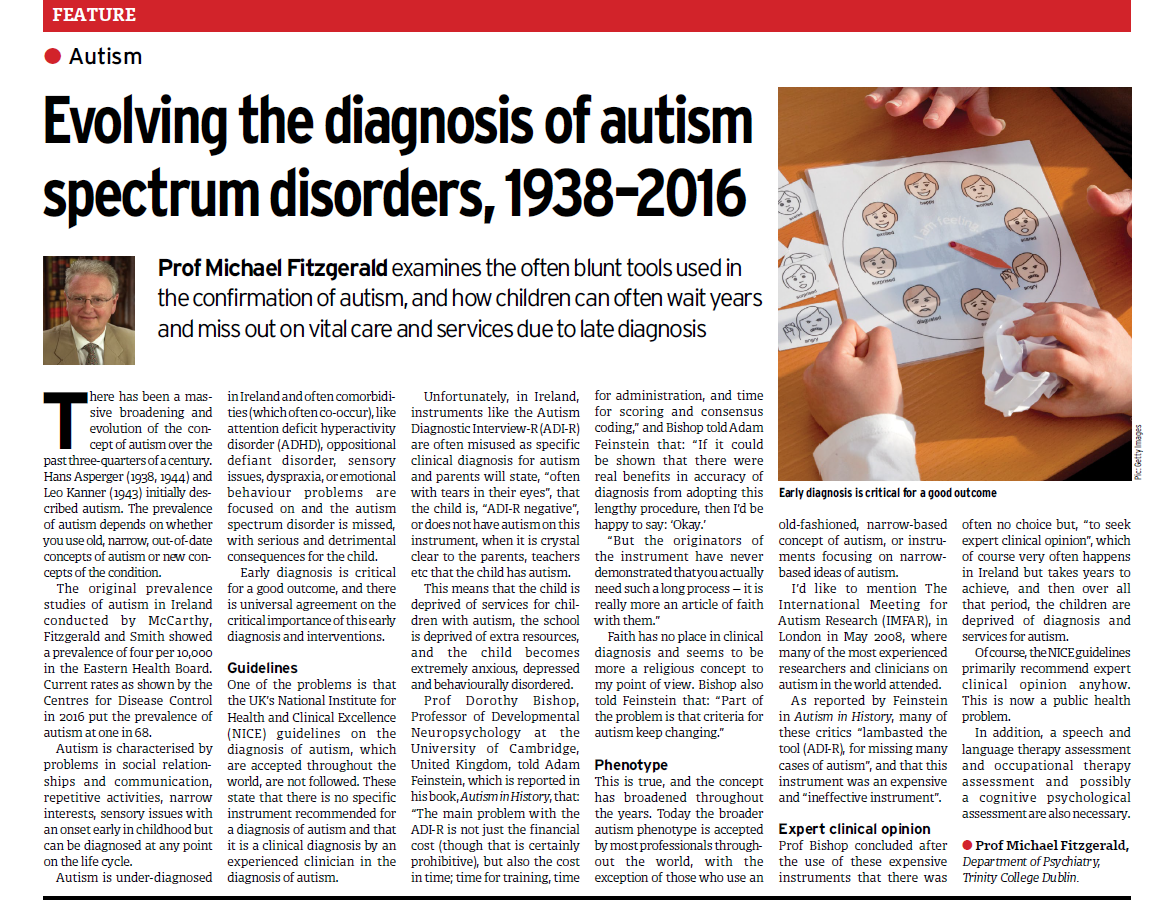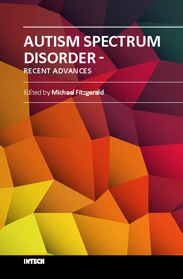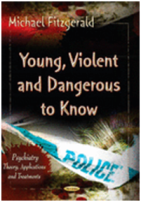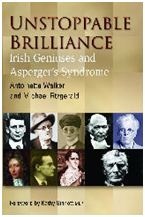There are few conditions that have received as much coverage in the popular press in recent times or have been the subject of as much controversial debate as autism. Public awareness regarding the condition has grown exponentially but many healthcare professionals may still lack confidence in making the diagnosis of autism according to Dr. Louise Gallagher who has conducted genetic research in autism at Trinity College Dublin.
This article aims to give an overview of the disorder of autism staring off with a clinical description and diagnostic criteria. Theories on causation and a review of the current accepted interventions will also be outlined.
It can be associated with ability of genius proportions. Examples include Godel, Hans Christian Andersen, Gregor Mendel, Archimedes, and Charles Lindberg.
Autism is very commonly associated with low functioning and Learning Disability. This is a false conception of the condition. High Functioning Autism or Asperger’s syndrome can occur in persons with very high I.Q.
Clinical Description
Autism is a neuro-developmental disorder of childhood that was first described by Leo Kanner. He described a group of children with impaired language, lack of eye contact, lack of social interaction and repetitive behaviour. In 1944, Hans Asperger published a paper describing a pattern of behaviours in several young boys who had normal intelligence and language development, but who also exhibited autistic-like behaviours and marked deficiencies in social and communication skills. Asperger’s syndrome went largely unrecognised until the 1980s. Now it is commonly used to describe individuals with an Autistic Spectrum Disorder and normal intellectual functioning.
Asperger’s syndrome, and described the following difficulties in the first two years of life of children with the condition:
(a) A lack of normal interest and pleasure in people around them.
(b) A reduction in the quality and quantity of babbling.
(c) A significant reduction in shared interests.
(d) A significant reduction in the wish to communicate verbally or non-verbally.
(e) A delay in speech acquisition and impoverishment of content.
(f) No imaginative play or if it does occur it is confined to one or two rigid patterns.
Gillberg’s diagnostic criteria for Asperger’s syndrome: social impairments; narrow interests; repetitive routines; speech and language peculiarities; non-verbal communication problems; motor clumsiness.
High Functioning Autism or Asperger’s syndrome is not uncommonly misdiagnosed as Schizoid, Narcissistic Borderline or Obsessive Compulsive Personality Disorder or Schizophrenia.
Genetic of Autism
Heritability estimates of over 90% have been made in relation to autism. Louise Gallagher points out that approaches to genetic studies have involved candidate gene studies and genome-wide, affected, sib-pair linkage studies. Association studies with variants within the Serotonin transporter gene have been conducted based on the well-established findings of elevated platelet Serotonin. Findings between studies have been inconclusive to date. Other genes, which have been studied, include UBE3A, GABRB HOXA1/B1, all of which have had conflicting reports of association. Reelin and WNT have had initial studies reporting association but these require replication.
Seven genome-wide linkage studies have been published to date and a large number of regions of putative linkage have been identified. The most convincing evidence has been found on Ch2q and 7q. Efforts are underway to narrow these regions down to find candidate genes.
Interventions
A comprehensive management plan should be put in place once the diagnosis has been established. Management involves a multidisciplinary approach involving the following:
(a) Speech and Language Therapy.
(b) Psychological assessment for appropriate school placement.
(c) Education interventions.
(d) Educational interventions.
(e) Pharmacotherapy.
(f) Theory of mind and empathy training (higher intellectual functioning).
Speech and Language Therapy is essential and should be provided regularly (at least once a week) for children with speech and language delay. Pharmacotherapy has limited application but Ritalin may be considered in the presence of marked hyperactivity although children with autism are reported to be more sensitive to the side effects. Risperidone has been shown to have some beneficial effects on global assessments of psychiatric morbidity but not on individual autistic symptoms. Naltrexone has been reported to have beneficial effects on self-injury and stereotyped behaviours but well-controlled clinical trials are still required. SSRIs are widely used in the US but not in Europe. There are some reports of improvements in repetitive behaviours but randomised, controlled trials (RCTs) are required. The use of Melatonin in sleep disorders including those associated with autism, has been reported as beneficial by a number of groups. Again there is an absence of well-controlled RCTs.
As mentioned above, the evidence supporting a casein and gluten-free diet is limited. Knivsber et al. report an overall benefit in their review of the area but the studies in question have a number of methodological flaws including small sample sizes. Secretin has not been shown to be helpful.
The following examples of people with High Functioning Autism or Asperger’s syndrome and contributors of genius.
Kurt Godel was very much a loner and a genius. He was fascinated by mathematics and contributed greatly to it. He was a linguist and an autodictat. Even in junior school he was fascinated by mathematics and physics. He was socially immature and had severe difficulties in social relationships. He had non-verbal behaviour difficulties and had a tremendous capacity for focus on mathematical problems. He was extremely naïve. He suffered from severe depression. His verbal contributions are characterised by extreme brevity. He was also quite paranoid and fearful of emissions from refrigerators.
Mendel was a genius who was also very much plodding in his work, hard working, and completely single minded. He proposed laws of inheritance that ultimately became the underpinning of the science of genetics. He had severe difficulties in social relationships. He was extremely shy. In front of a class he was an extremely poor teacher. In teaching he never was fully certified and was always a substitute teacher. He was a man of absolute routines. He regarded his plants as his children. He was a monk who became rather paranoid and saw his fellow monks as traitors.
Hans Christian Andersen was a great storyteller. He was socially immature. He had very significant social interactional problems. He was very much a loner. He never married. He was a great writer of fairytales and showed enormous creativity in this area. He read an enormous amount of books. He was bullied and called names at school. He was very much an outsider. He spoke with a high pitch tone of voice. He was extremely obsessive. He was very ritualistic in his behaviour. He was very controlling and at meal times his food had always to be served first. He suffered very much from depression throughout his life. He had identity diffusion. He wrote endlessly and compulsively.
Archimedes was a great Greek mathematician and inventor. He was a loner. He was mechanically and mathematically minded. He hyper focussed on his researches. His interests were extremely narrow. He would forget to eat his meals. He was regarded as extremely eccentric.
Charles Lindberg was a great aviator. He was a loner as a child. He was painfully shy in social relationships, he was naïve in accepting an award from Hitler. He liked solitude. He was extremely logical and obsessed with aviation. He also worked on the issues in high altitude flying and on a pump that blood could be pumped if the heart was being operated upon. This work was carried out at the Rockerfeller Institute. His greatest achievement and one that he was well suited for was in flying solo across the Atlantic over Ireland to Paris. The link between psychiatric disorders and genius has often been made and these are further examples of that link.

